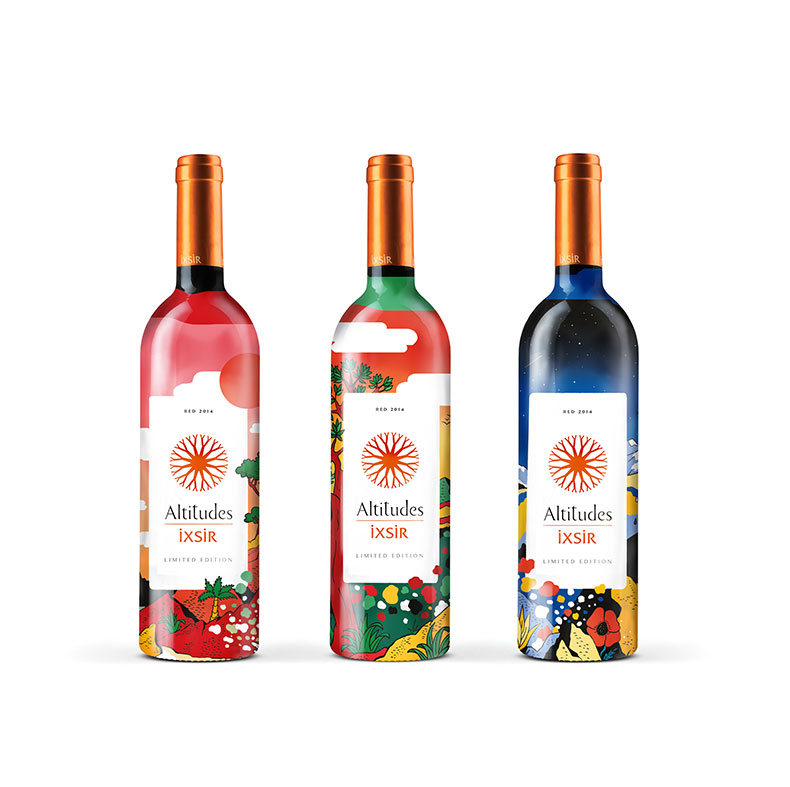From the June 2023 issue of Apollo. Preview and subscribe here.
Considering its 7,000-year history, Lebanese winemaking is less-known than it deserves. Venerable Lebanese châteaus such as Ksara, the first modern winery in the country, are sometimes found on adventurous wine lists elsewhere. In 1975, Serge Hochar arrived in London with a suitcase of Château Musar vintages and managed to convince establishment oenophiles to break their fidelity to dowdy claret – a story that has become something of a creation myth for Lebanese wine in the modern era.
The mercantile Canaanites – later known as Phoenicians – spread wine along with the first alphabet throughout the Mediterranean from 3,000–350 BC. Trading from the ports of Byblos, Tyre and Sidon, they set up outposts as far away as Carthage in Tunisia and Cadiz in Spain. At Tell el-Burak, south of Sidon, archaeologists recently discovered a winery from the eighth century BC, including a rectangular treading basin. The Romans continued wine cultivation; the emperor Antoninus Pius (r. 138–161 AD) built the Temple of Bacchus in Baalbek – the largest temple dedicated to the god in the world. Even the prophet Hosea lauded the ‘wines of Lebanon’ in the Old Testament.
The advent of Islam took its toll on wine-making, as alcohol was prohibited and many vineyards uprooted. Under the Ottomans, Christian and Jewish populations were permitted to produce wine solely for religious ceremonies – religious connections are still discernible at Château St Thomas, on the eastern slope of Mount Lebanon. In 1857, Jesuit monks began planting French noble grape varieties in the Bekaa Valley, starting the enduring fashion for French winemaking styles.
All winemaking is hope and decision-making within the constraints of climate and harvest. Lebanese wine production has the additional constraints of religious tension and open conflict. The civil war of 1975–90 saw production plummet, as the Bekaa Valley became a thoroughfare and battleground.
French traditional wineries continue to produce fine Levantine interpretations of Bordeaux blends – reliable choices for an industry that needs to convince international markets. Alongside, though, is a local, younger market with a burgeoning interest in exploring national identity through indigenous grapes and styles. Several wineries have been established in the past 20 years to retell the history of Lebanese terroir, and one of these, IXSIR, north of Byblos, uses Lebanese artists in its retelling.
Photo: courtesy IXSIR

IXSIR – the Arabic word is the origin of the English ‘elixir’ – produced its first vintage in 2008. Founder Étienne Debbane had a dream of re-establishing indigenous vineyards in Lebanon. In 2004 he conducted a survey of all existing vineyards, in a country the size of the Gironde, investigating the terroir and tracing its pre-Ottoman roots. Debbane acquired six vineyards around the country, totalling 150 hectares. At the same time, Gabriel Rivero, who previously made wines in Ribera del Duero and the Médoc, joined as winemaker.
The main vineyard is in the mountains of Batroun, 1,800m above sea level, making it one of the highest vineyards on earth. The winery is dug into the basement of a 17th-century Ottoman house; through pioneering architecture and design, it practises ‘gravity-fed’ winemaking, in which juices require minimal pressing, as they flow down from one fermentation level to the next, preserving precious energy in a country with regular blackouts. IXSIR has won three international architectural awards for these environmental innovations.
Lebanon has three viticultural climates: subtropical Mediterranean on the coast, alpine in the mountains, and continental in the Bekaa Valley. IXSIR has a presence in all three, at Batroun (Syrah, Petit Verdot); Ainata (Cabernet Sauvignon and indigenous Caladoc); Deir El Ahmar (Arinarnoa, Tempranillo); Niha (Syrah); Kab Elias (Merlot, Semillon); and Jezzine (Syrah). Around 250 farming families from different religions and communities are involved in cultivation.
The winery integrates artists in its project, with a continuous exhibition programme in a space 12 metres below ground, next to the winery, with open views of vats and barrel cellars. The first exhibition, ‘Bacchanalia’, in 2014, featured artists including Leila Kubba Kawash and Bassam Kyrillos. For Kubba Kawash, ‘It was a joy to meet people who don’t usually go to galleries. People are in a different mindset to look at art with a glass of wine in their hands.’ For his recent exhibition, Anachar Basbous placed iron sculptures throughout the winery, even among the rows of vines. The artist said: ‘My sculptures here […] are a reminder that no matter how hard the stone is, a beautiful statue will emerge beautifully at the end.’
Some vintages of IXSIR’s popular Altitudes wines – including their award-wining rosé – are offered in limited editions. Emerging Lebanese artists, including Louay Daoust, Jad El Khoury, Zeina Abirached and Joseph Kai, have all offered impressions of Lebanon for labels of these wines. For IXSIR’s 10th anniversary, the Lebanese graphic artist Raphaelle Macaron created three jubilant images of Lebanon’s landscape in her trademark bold style.
More cultural events are planned to attract a new generation of Lebanese wine drinkers and international visitors, including a concert among the vines this July. Together with the restaurant, which uses locally sourced produce, this is part of a project of rebuilding and retelling a contemporary Lebanese identity. ‘Lebanon is a tiny country. But there is diversity,’ Debbane says. ‘Our wine is a mosaic […] we think we can express Lebanese wine differently. Not that we’re better; it’s just a new expression.’
From the June 2023 issue of Apollo. Preview and subscribe here.


